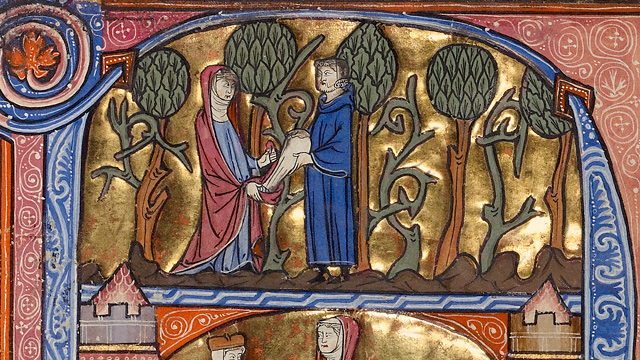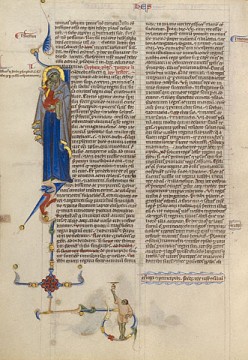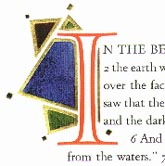
I had a fantastic middle school history teacher named Mr. Saunders. One day, after we had been learning about illuminated manuscripts, Mr. Saunders gave us a class period of complete silence--except for a tape of Gregorian chants--to create our own.
We didn't have any gold leaf, so our manuscripts were not technically "illuminated," merely illustrated. But it was one of my favorite classes, and I've been fond of the art form ever since. So when I was in LA this weekend and noticed that the Getty was showing a new illuminated manuscript exhibit, I had to check it out.
Okay, I realize that the Getty is in Southern California, and here I am on a Northern California blog, but I have an excuse: the only work in the exhibit that wasn't centuries old belonged to San Francisco master calligrapher Thomas Ingmire! Did you know we had a master calligrapher? Neither did I!
Ingmire had created a series of pages to demonstrate all the steps of the illumination process. The artist first paints glue over the areas to be illuminated, then sticks gold leaf to the glue and brushes any extra leaf away. At this point, though, the gold is dull matte and the page can hardly be called illuminated. How to make it glossy?

Gloss, or shine, or illumination--whatever you want to call it--comes from specular reflection, the same thing that makes a mirror work. When a surface is very smooth at the microscopic level, all the light rays hitting it are reflected at the same angle. A mirror has almost perfect specular reflection, because it's almost perfectly smooth. But if the surface has microscopic bumps and ridges, they reflect light rays in all different directions, leading to diffuse reflection--a matte surface.

